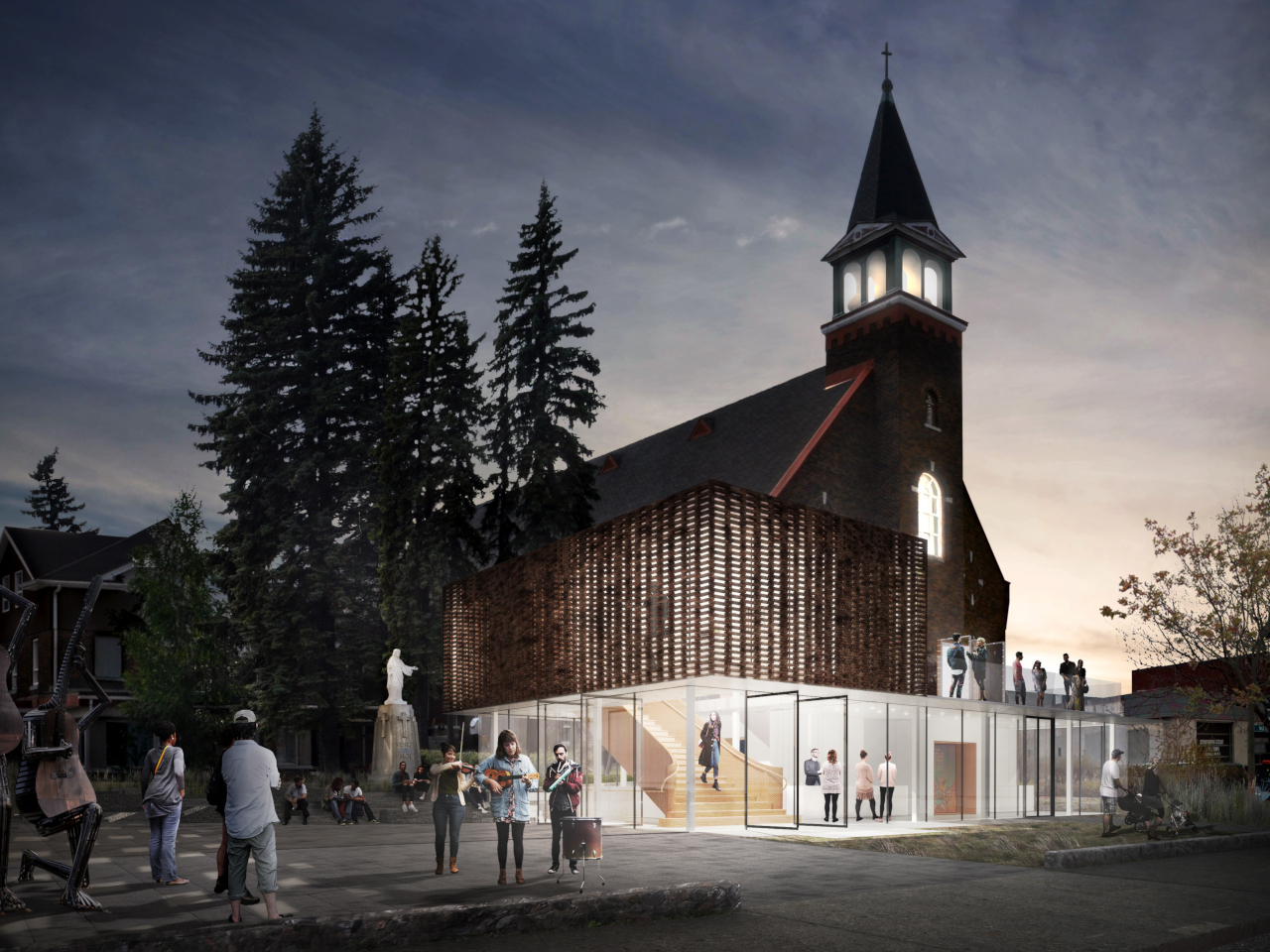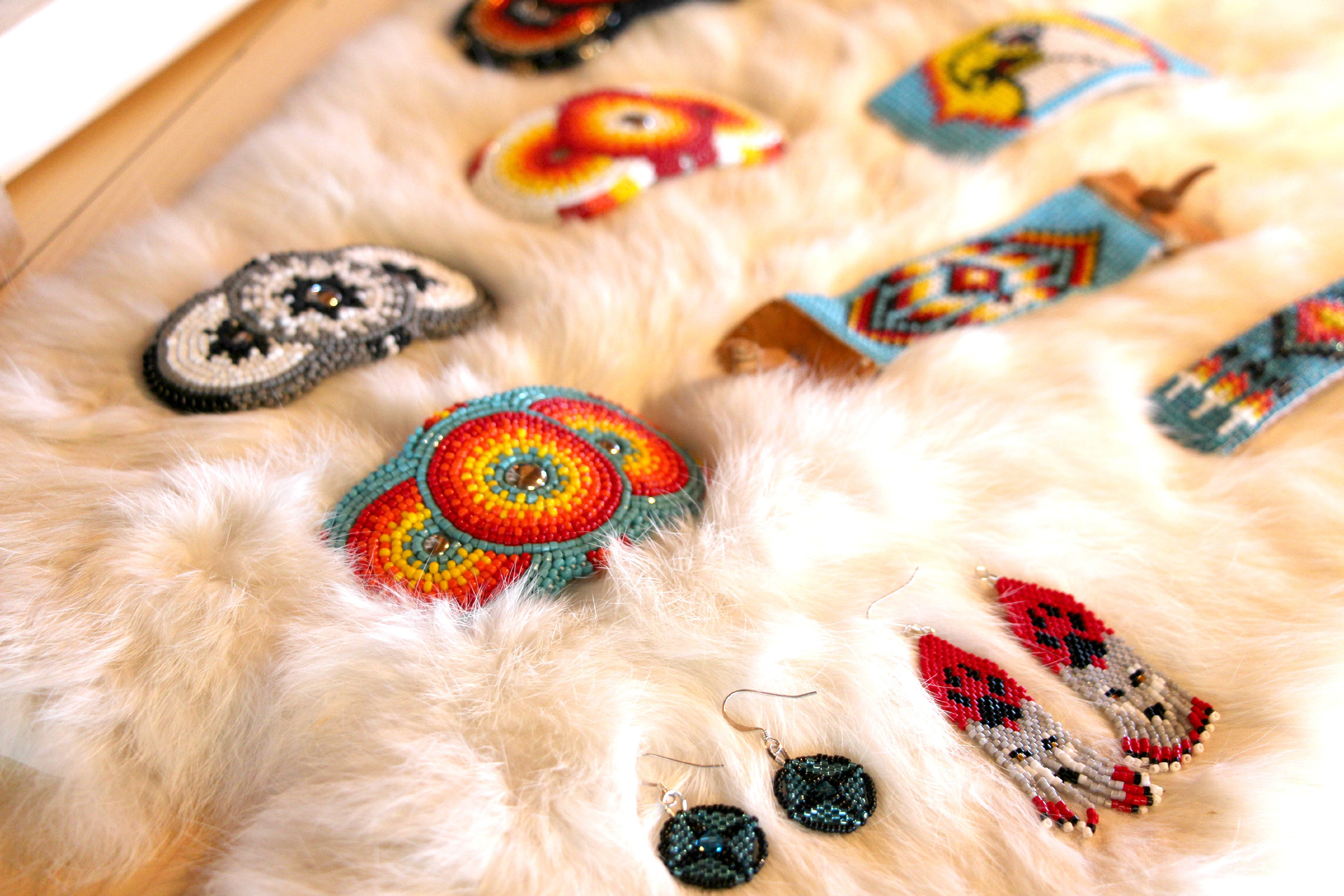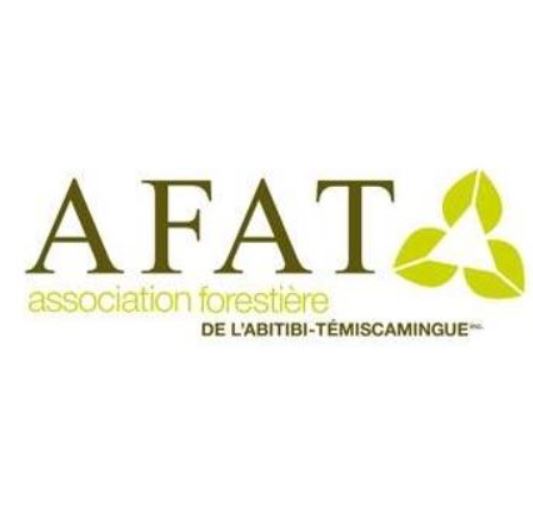On a glorious afternoon, while vacationing in the Abitibi-Temiscamingue region you decide to take in some sun and go for a stroll in the forest. The wind gently caresses your face and you wander along the trail with one eye open for any animals you might come across. A few chipmunks warily eye you, a partridge naively bobs along the path and a bird darts out from the bushes, in a rustling of wings and leaves, as you stride past toward the beach that stretches out in front of you.
You emerge from the forest and are greeted with a hearty: “Hi!” You realize you have just been greeted by a tall, beautiful young girl with a smile as wide as the beach. That’ll be Marie-Frédérique Frigon. She is carefully holding a small blanket in her hands. Inside is an injured raven she has just found. You shortly learn that not only is Marie-Frédérique passionate about animals, but that she works at the Refuge Pageau, a rescue centre for wild animals located in
Amos.
[caption id="attachment_6350" align="alignnone" width="768"]
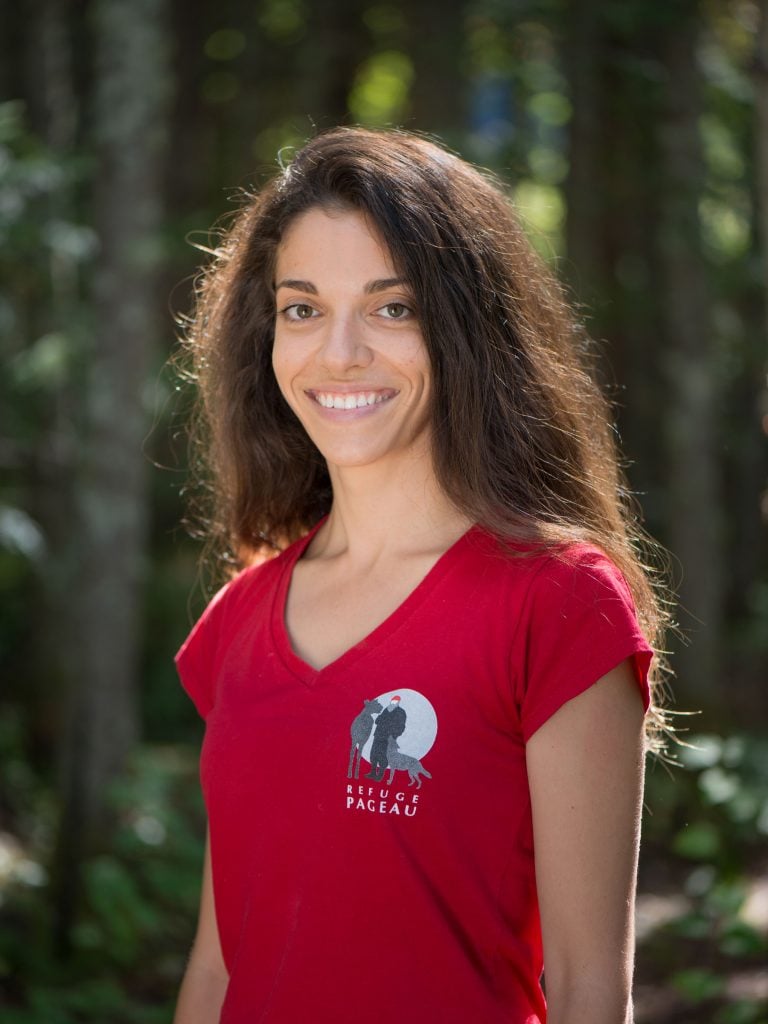
Marie-Frédérique Frigon - Photo : Christian Leduc[/caption]
You listen to her tell you about the most likely cause for the animal’s injury and common mistakes that could be avoided, while making a mental note as to her storytelling ability, but what mainly sticks out to you is how she can convey her fondness for animals in a matter of just a few moments.
Little by little, you come to learn more about this fascinating young girl whose ability to establish a rapport with wildlife seems innate. “While I was studying industrial design in Montreal, I had a summer job back at the rescue centre which allowed me to get away from the big city and regularly get back to my roots in Abitibi,” she explains. “After I finished my studies, one thing led to another and I eventually wound up back here.” As the discrepancy between her choice of studies and her current career seems to take you aback, she adds: “I used to dream of being a vet when I was a child. I grew up in Amos, and my dad was a friend of
Michel Pageau. We would sometimes visit him at his home. I personally don’t remember this, but my family says that I would hide when it came time to leave because I didn’t want to go back home. It was way cooler there with all the animals.” But does she miss design work you ask? “I do small graphic design contracts on the side now and then,” she says. “I also play a part in any building or signage design projects that take place at the rescue centre. So I get the best of both worlds.”
You cast a sideways glance at her as she interacts with the animal and can’t help but notice how easy it comes to her. With characteristic modesty, she admits: “I’m lucky, I have an easy time with the animals, we’re on the same wavelength. Some people get on better with carnivores or herbivores. As for me, I get along with moose the same as with wolves or beavers. Often, people ask me if I have a favourite, but honestly I can’t say that I do. They all have a little something that sets them apart and makes them unique as individuals.”
You’ve often heard speak of the
Refuge Pageau since your arrival in the Abitibi-Temiscamingue region. Each time, you have perceived a touch of pride in the voice of the speaker as though the place were much more than a simple animal shelter or tourist attraction; and that it holds, for some reason you can’t quite pin, a special place in the heart of Temiscabitibians. Marie-Frédérique is no exception to that rule and, if anything, only reinforces that impression. “The place is a regional monument,” she says. “It plays a huge role as a tourist attraction and is probably a forerunner when it comes to caring for wild animals in Quebec. Michel Pageau has done an awful lot for the region and for wildlife without really following a premeditated plan. He followed his instinct, did what he thought was right and I don’t think he expected that it would have the impact that it did. This impact goes beyond our borders, even to Europe—the refuge Pageau is a true monument.”
The Refuge Pageau is much more than simply a tourist attraction, it’s a haven for injured animals, a place where they can be treated before being returned to the wild. According to Marie-Frédérique, the Refuge Pageau has much more to offer the public than just a simple tourist experience. “We consider that, ideally, visitors should not only get a chance to marvel at the wildlife at the shelter, but also be educated on how to prevent common mistakes that lead to animals being brought here by the hundreds each year in the first place.”
As she bids you farewell and wishes you a pleasant stay in the Abitibi-Temiscamingue region, she concludes by adding: “Make the most of it! If you don’t have time to do everything the first time, it doesn’t matter, you’ll be back. We have so much to offer here and it’s a shame when people stress out and try and take everything all in at once.” She therefore urges you to just kick back and unwind and when you ask her just how she accomplishes that, she laughs and says: “My work is so laid-back, there’s nothing to unwind! Hanging out with the animals at the Refuge Pageau is a great way to relax. Other than that, there are forests everywhere in the region. Just go talk to some spruce trees and forget about the rest!”
You take your leave of Marie-Frédérique’s—her radiant smile still fresh in your mind—and promise yourself that you will take the time to enjoy your stay.
[caption id="attachment_6332" align="alignnone" width="1024"]
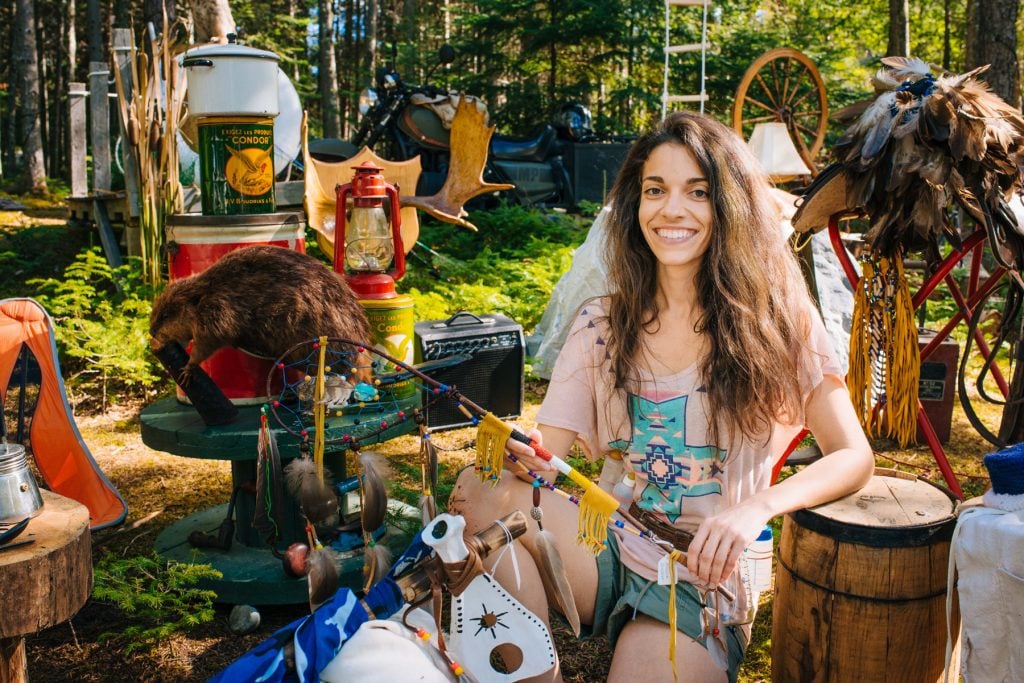
Marie-Frédérique Frigon, master in the art of storytelling - Photo : Christian Leduc[/caption]
 Marie-Frédérique Frigon - Photo : Christian Leduc[/caption]
You listen to her tell you about the most likely cause for the animal’s injury and common mistakes that could be avoided, while making a mental note as to her storytelling ability, but what mainly sticks out to you is how she can convey her fondness for animals in a matter of just a few moments.
Little by little, you come to learn more about this fascinating young girl whose ability to establish a rapport with wildlife seems innate. “While I was studying industrial design in Montreal, I had a summer job back at the rescue centre which allowed me to get away from the big city and regularly get back to my roots in Abitibi,” she explains. “After I finished my studies, one thing led to another and I eventually wound up back here.” As the discrepancy between her choice of studies and her current career seems to take you aback, she adds: “I used to dream of being a vet when I was a child. I grew up in Amos, and my dad was a friend of Michel Pageau. We would sometimes visit him at his home. I personally don’t remember this, but my family says that I would hide when it came time to leave because I didn’t want to go back home. It was way cooler there with all the animals.” But does she miss design work you ask? “I do small graphic design contracts on the side now and then,” she says. “I also play a part in any building or signage design projects that take place at the rescue centre. So I get the best of both worlds.”
You cast a sideways glance at her as she interacts with the animal and can’t help but notice how easy it comes to her. With characteristic modesty, she admits: “I’m lucky, I have an easy time with the animals, we’re on the same wavelength. Some people get on better with carnivores or herbivores. As for me, I get along with moose the same as with wolves or beavers. Often, people ask me if I have a favourite, but honestly I can’t say that I do. They all have a little something that sets them apart and makes them unique as individuals.”
You’ve often heard speak of the Refuge Pageau since your arrival in the Abitibi-Temiscamingue region. Each time, you have perceived a touch of pride in the voice of the speaker as though the place were much more than a simple animal shelter or tourist attraction; and that it holds, for some reason you can’t quite pin, a special place in the heart of Temiscabitibians. Marie-Frédérique is no exception to that rule and, if anything, only reinforces that impression. “The place is a regional monument,” she says. “It plays a huge role as a tourist attraction and is probably a forerunner when it comes to caring for wild animals in Quebec. Michel Pageau has done an awful lot for the region and for wildlife without really following a premeditated plan. He followed his instinct, did what he thought was right and I don’t think he expected that it would have the impact that it did. This impact goes beyond our borders, even to Europe—the refuge Pageau is a true monument.”
The Refuge Pageau is much more than simply a tourist attraction, it’s a haven for injured animals, a place where they can be treated before being returned to the wild. According to Marie-Frédérique, the Refuge Pageau has much more to offer the public than just a simple tourist experience. “We consider that, ideally, visitors should not only get a chance to marvel at the wildlife at the shelter, but also be educated on how to prevent common mistakes that lead to animals being brought here by the hundreds each year in the first place.”
As she bids you farewell and wishes you a pleasant stay in the Abitibi-Temiscamingue region, she concludes by adding: “Make the most of it! If you don’t have time to do everything the first time, it doesn’t matter, you’ll be back. We have so much to offer here and it’s a shame when people stress out and try and take everything all in at once.” She therefore urges you to just kick back and unwind and when you ask her just how she accomplishes that, she laughs and says: “My work is so laid-back, there’s nothing to unwind! Hanging out with the animals at the Refuge Pageau is a great way to relax. Other than that, there are forests everywhere in the region. Just go talk to some spruce trees and forget about the rest!”
You take your leave of Marie-Frédérique’s—her radiant smile still fresh in your mind—and promise yourself that you will take the time to enjoy your stay.
[caption id="attachment_6332" align="alignnone" width="1024"]
Marie-Frédérique Frigon - Photo : Christian Leduc[/caption]
You listen to her tell you about the most likely cause for the animal’s injury and common mistakes that could be avoided, while making a mental note as to her storytelling ability, but what mainly sticks out to you is how she can convey her fondness for animals in a matter of just a few moments.
Little by little, you come to learn more about this fascinating young girl whose ability to establish a rapport with wildlife seems innate. “While I was studying industrial design in Montreal, I had a summer job back at the rescue centre which allowed me to get away from the big city and regularly get back to my roots in Abitibi,” she explains. “After I finished my studies, one thing led to another and I eventually wound up back here.” As the discrepancy between her choice of studies and her current career seems to take you aback, she adds: “I used to dream of being a vet when I was a child. I grew up in Amos, and my dad was a friend of Michel Pageau. We would sometimes visit him at his home. I personally don’t remember this, but my family says that I would hide when it came time to leave because I didn’t want to go back home. It was way cooler there with all the animals.” But does she miss design work you ask? “I do small graphic design contracts on the side now and then,” she says. “I also play a part in any building or signage design projects that take place at the rescue centre. So I get the best of both worlds.”
You cast a sideways glance at her as she interacts with the animal and can’t help but notice how easy it comes to her. With characteristic modesty, she admits: “I’m lucky, I have an easy time with the animals, we’re on the same wavelength. Some people get on better with carnivores or herbivores. As for me, I get along with moose the same as with wolves or beavers. Often, people ask me if I have a favourite, but honestly I can’t say that I do. They all have a little something that sets them apart and makes them unique as individuals.”
You’ve often heard speak of the Refuge Pageau since your arrival in the Abitibi-Temiscamingue region. Each time, you have perceived a touch of pride in the voice of the speaker as though the place were much more than a simple animal shelter or tourist attraction; and that it holds, for some reason you can’t quite pin, a special place in the heart of Temiscabitibians. Marie-Frédérique is no exception to that rule and, if anything, only reinforces that impression. “The place is a regional monument,” she says. “It plays a huge role as a tourist attraction and is probably a forerunner when it comes to caring for wild animals in Quebec. Michel Pageau has done an awful lot for the region and for wildlife without really following a premeditated plan. He followed his instinct, did what he thought was right and I don’t think he expected that it would have the impact that it did. This impact goes beyond our borders, even to Europe—the refuge Pageau is a true monument.”
The Refuge Pageau is much more than simply a tourist attraction, it’s a haven for injured animals, a place where they can be treated before being returned to the wild. According to Marie-Frédérique, the Refuge Pageau has much more to offer the public than just a simple tourist experience. “We consider that, ideally, visitors should not only get a chance to marvel at the wildlife at the shelter, but also be educated on how to prevent common mistakes that lead to animals being brought here by the hundreds each year in the first place.”
As she bids you farewell and wishes you a pleasant stay in the Abitibi-Temiscamingue region, she concludes by adding: “Make the most of it! If you don’t have time to do everything the first time, it doesn’t matter, you’ll be back. We have so much to offer here and it’s a shame when people stress out and try and take everything all in at once.” She therefore urges you to just kick back and unwind and when you ask her just how she accomplishes that, she laughs and says: “My work is so laid-back, there’s nothing to unwind! Hanging out with the animals at the Refuge Pageau is a great way to relax. Other than that, there are forests everywhere in the region. Just go talk to some spruce trees and forget about the rest!”
You take your leave of Marie-Frédérique’s—her radiant smile still fresh in your mind—and promise yourself that you will take the time to enjoy your stay.
[caption id="attachment_6332" align="alignnone" width="1024"] Marie-Frédérique Frigon, master in the art of storytelling - Photo : Christian Leduc[/caption]
Marie-Frédérique Frigon, master in the art of storytelling - Photo : Christian Leduc[/caption] 



